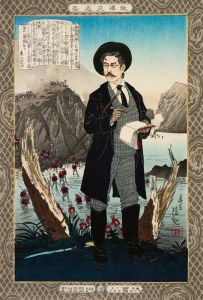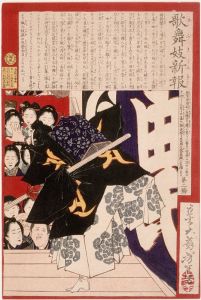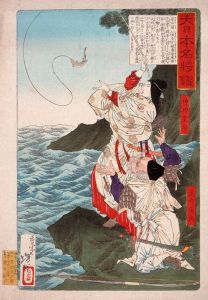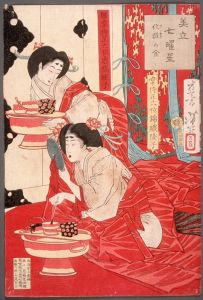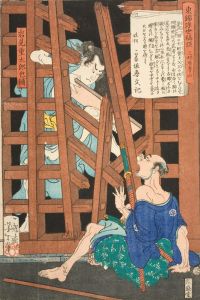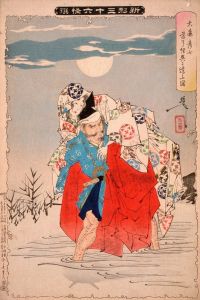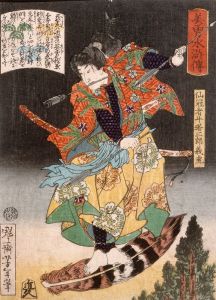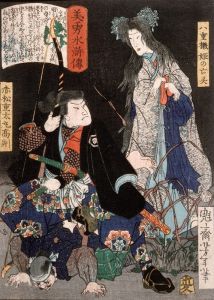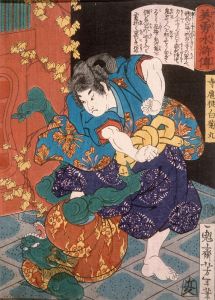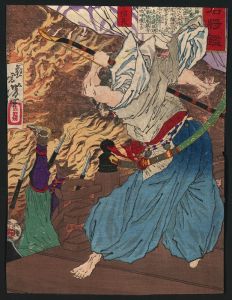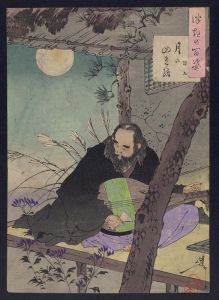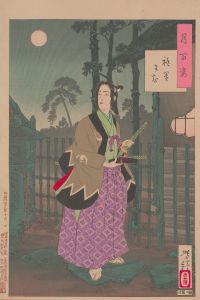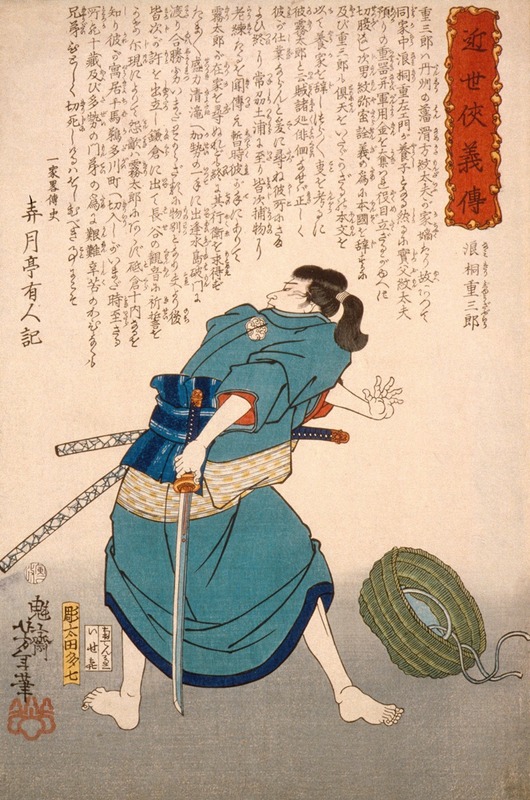
Namikiri Jūzaborō with Drawn Sword
A hand-painted replica of Tsukioka Yoshitoshi’s masterpiece Namikiri Jūzaborō with Drawn Sword, meticulously crafted by professional artists to capture the true essence of the original. Each piece is created with museum-quality canvas and rare mineral pigments, carefully painted by experienced artists with delicate brushstrokes and rich, layered colors to perfectly recreate the texture of the original artwork. Unlike machine-printed reproductions, this hand-painted version brings the painting to life, infused with the artist’s emotions and skill in every stroke. Whether for personal collection or home decoration, it instantly elevates the artistic atmosphere of any space.
Tsukioka Yoshitoshi (1839–1892) was a renowned Japanese artist and one of the last great masters of the ukiyo-e genre of woodblock printing and painting. His works are celebrated for their dynamic composition, dramatic expression, and innovative use of color. Among his many celebrated pieces is "Namikiri Jūzaborō with Drawn Sword," which exemplifies his skill in capturing intense emotion and action.
"Namikiri Jūzaborō with Drawn Sword" is part of Yoshitoshi's series that often depicted historical and legendary figures, warriors, and scenes from kabuki theater, which were popular subjects in ukiyo-e art. Yoshitoshi's work during the late Edo and early Meiji periods reflects a time of significant cultural and social change in Japan, as the country was opening up to Western influences and modernizing rapidly. Despite these changes, Yoshitoshi remained dedicated to traditional Japanese themes and techniques, while also incorporating new elements that reflected the evolving landscape of Japanese art.
The artwork portrays Namikiri Jūzaborō, a character likely drawn from kabuki theater or historical narratives, depicted with a drawn sword, suggesting a moment of confrontation or impending action. Yoshitoshi's ability to convey tension and movement is evident in the posture and expression of Jūzaborō, as well as in the detailed rendering of his attire and weaponry. The use of bold lines and vibrant colors is characteristic of Yoshitoshi's style, which often emphasized the emotional and psychological depth of his subjects.
Yoshitoshi's work is notable for its psychological intensity and the way it captures the complexities of human emotion. In "Namikiri Jūzaborō with Drawn Sword," this is achieved through the careful attention to facial expression and body language, which convey a sense of determination and readiness for battle. The composition of the piece, with its dynamic angles and use of space, draws the viewer into the scene, creating a sense of immediacy and engagement.
The historical context of Yoshitoshi's work is also significant. During his lifetime, Japan was undergoing a period of rapid transformation, moving from the isolationist policies of the Edo period to the more open and internationally engaged Meiji era. This transition influenced many aspects of Japanese culture, including art. Yoshitoshi's work reflects both a reverence for traditional Japanese aesthetics and an awareness of contemporary developments. His ability to bridge these worlds has contributed to his lasting legacy as one of the most important figures in Japanese art history.
Yoshitoshi's influence extended beyond his lifetime, as his work continued to inspire artists and collectors both in Japan and internationally. His prints are highly sought after for their artistic merit and historical significance, and they offer valuable insights into the cultural and social dynamics of 19th-century Japan. "Namikiri Jūzaborō with Drawn Sword" is a testament to Yoshitoshi's mastery of the ukiyo-e form and his ability to capture the spirit of his time through the lens of traditional Japanese art.
In summary, "Namikiri Jūzaborō with Drawn Sword" by Tsukioka Yoshitoshi is a compelling example of the artist's skill in depicting dramatic and emotionally charged scenes. Through his innovative use of composition, color, and line, Yoshitoshi created a work that resonates with the viewer and reflects the rich cultural heritage of Japan during a time of significant change.





